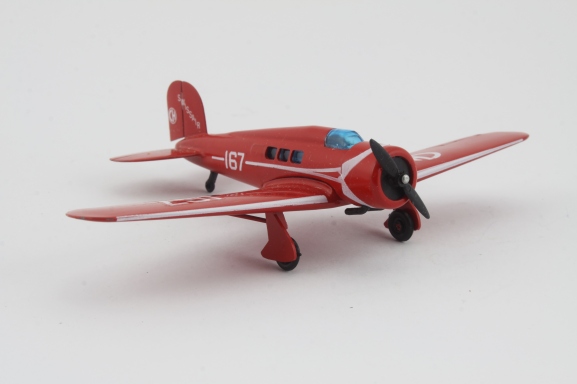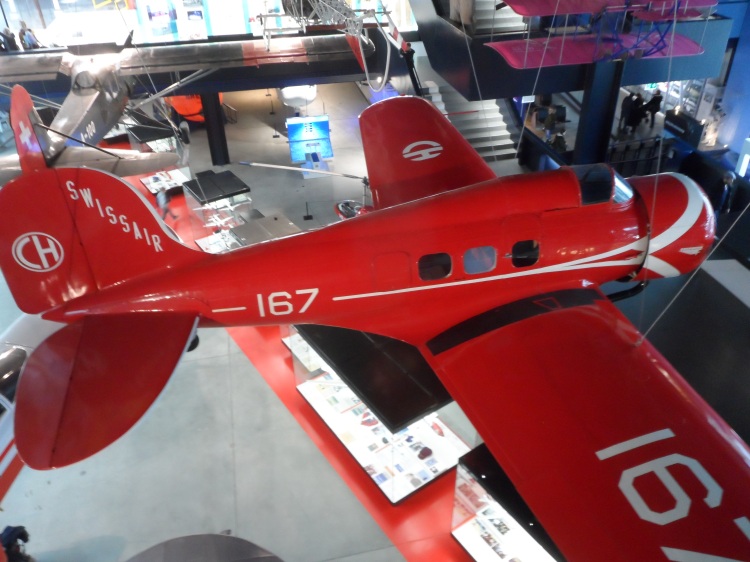Mike Pigott focuses on the only aircraft model made by German company NZG, a vintage Lockheed Orion.

The German model manufacturer NZG is known today mainly for models of construction equipment and heavy trucks, but over the years has produced a wide range of different types of vehicles. NZG, like its compatriot company Conrad, are specialists at producing commissioned models for the original equipment manufacturers. These companies have become the ‘go-to’ manufacturers for industries which require promotional or commemorative models of products to give to prospective clients or sell as souvenirs. While NZG is mostly associated today with big trucks, cranes and plant machinery, since the company was founded in the 1970s, a wide range of different miniatures have been produced. These have included promotional car models for Porsche and Mercedes-Benz dealers, buses, fire engines, vintage vehicles, and very specialist items, such as diesel engines. Possibly the most surprising model was made by NZG in 1980 – a model of a classic aircraft.
LOCKHEED ORION Launched in 1931, the Lockheed Orion was a six-seater, single engine, low-wing monoplane. It was revolutionary for its time, being the first passenger aircraft to have retractable wheels, and could travel at higher speeds than most military planes. While used by a number of airlines including American Airlines and Northwest Airlines, the high speed of the Orion made it a very popular choice for air races; it won a number of major races and set several speed records. In total, only 35 Orions were built; new aviation rules in the USA meant that airliners had to have more than one engine and a co-pilot, so Orion production was curtailed.
Launched in 1931, the Lockheed Orion was a six-seater, single engine, low-wing monoplane. It was revolutionary for its time, being the first passenger aircraft to have retractable wheels, and could travel at higher speeds than most military planes. While used by a number of airlines including American Airlines and Northwest Airlines, the high speed of the Orion made it a very popular choice for air races; it won a number of major races and set several speed records. In total, only 35 Orions were built; new aviation rules in the USA meant that airliners had to have more than one engine and a co-pilot, so Orion production was curtailed.
SWISSAIR In 1932, Swissair ordered a pair of Lockheed Orions to establish high-speed services from Switzerland to France and Germany. The Orion was the Concorde of its era; Swissair charged a premium for travellers on these fast and exclusive flights. The planes were painted a brilliant red colour, with white sweeps along the sides. They certainly stood out from other planes, and were nicknamed ‘red hounds’. Unfortunately, the small seating capacity of the Orions made them uneconomical, and within a few years they were replaced by much larger planes such as the Douglas DC-2. The Lockheeds were sold on to Spain, and were destroyed during the Spanish Civil War.
In 1932, Swissair ordered a pair of Lockheed Orions to establish high-speed services from Switzerland to France and Germany. The Orion was the Concorde of its era; Swissair charged a premium for travellers on these fast and exclusive flights. The planes were painted a brilliant red colour, with white sweeps along the sides. They certainly stood out from other planes, and were nicknamed ‘red hounds’. Unfortunately, the small seating capacity of the Orions made them uneconomical, and within a few years they were replaced by much larger planes such as the Douglas DC-2. The Lockheeds were sold on to Spain, and were destroyed during the Spanish Civil War.
The only Lockheed Orion still in existence was originally owned by the Shell Petroleum Company in the USA for promotional and executive purposes. In 1976, the plane was found in a derelict condition in California. It was purchased by Swissair, and restored to original flying condition. It was painted in the 1930s Swissair livery of red and white, with the period serial number CH-167, although it was not one of the company’s original two planes. It was later donated to the Swiss Transport Museum in Lucerne, where it can still be seen today.
NZG ORION To commemorate the addition of the Orion to its collection, the Swiss Transport Museum commissioned a model of it from NZG in 1980. The model was something of a departure for the German manufacturer, but was a very competent model; it was made and finished to a higher standard than other contemporary miniature planes such as Matchbox Skybusters. It was made to 1/100 scale, with a wingspan of 14cm and a length of 9cm.
To commemorate the addition of the Orion to its collection, the Swiss Transport Museum commissioned a model of it from NZG in 1980. The model was something of a departure for the German manufacturer, but was a very competent model; it was made and finished to a higher standard than other contemporary miniature planes such as Matchbox Skybusters. It was made to 1/100 scale, with a wingspan of 14cm and a length of 9cm. The model was nearly all diecast, with only a few small plastic parts. There were two main castings; the first included the fuselage, tail-wings and tail, with the second part being the main wings. The engine cowling was a separate plastic part, and had a pair of black exhaust manifolds protruding from the lower half. There was a black plastic insert on the front which was connected to a spinning two-blade propeller. The retractable undercarriage was modelled in the landing position, with two diecast flaps riveted in position. Non-working black wheels were attached to these, and a pair of V-shaped struts held the flaps in position. A single black plastic tail wheel was fitted at rear. The cockpit canopy and passenger windows were made from blue-tinted translucent plastic. The model was painted bright satin red. The wing and tail decals were water-slide transfers, but the stripes on the fuselage sides and wing leading edges were printed.
The model was nearly all diecast, with only a few small plastic parts. There were two main castings; the first included the fuselage, tail-wings and tail, with the second part being the main wings. The engine cowling was a separate plastic part, and had a pair of black exhaust manifolds protruding from the lower half. There was a black plastic insert on the front which was connected to a spinning two-blade propeller. The retractable undercarriage was modelled in the landing position, with two diecast flaps riveted in position. Non-working black wheels were attached to these, and a pair of V-shaped struts held the flaps in position. A single black plastic tail wheel was fitted at rear. The cockpit canopy and passenger windows were made from blue-tinted translucent plastic. The model was painted bright satin red. The wing and tail decals were water-slide transfers, but the stripes on the fuselage sides and wing leading edges were printed.
All in all, this was an excellent model, with very accurate dimensions, particularly regarding the width of the wings, and tail and flap details. The only (minor) faults were the unrealistic blue glazing, the lack of cylinders in the rotary engine behind the propeller, and the undefined passenger door (it was behind the rearmost window on the starboard side).
PACKAGING
The model was only available in the gift shop at the Lucerne Transport Museum. It was sold in a plain white cardboard box with no manufacturer’s details, and there was no information on the underside of the model either. It was numbered 211 in the NZG series, and some models may have been available to collectors.
This article first appeared in the April 2021 issue of Diecast Collector Magazine.
Text and photos (C) Mike Pigott 2021
